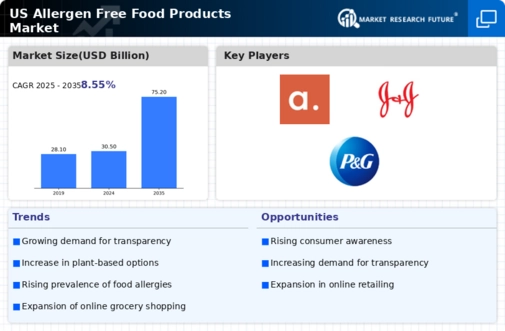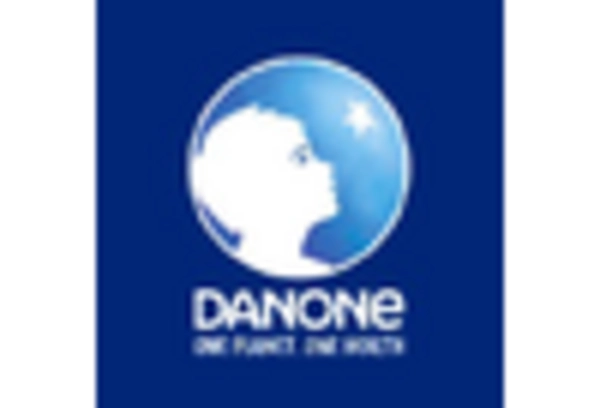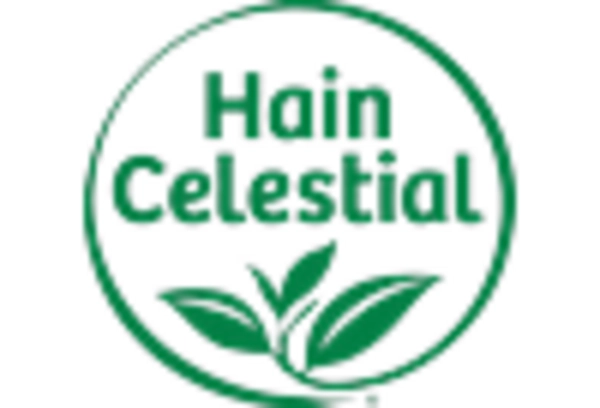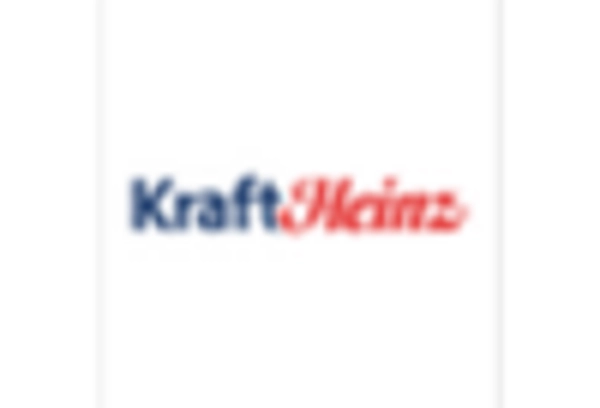Growing Health Consciousness
The allergen free-food-products market is experiencing a notable surge in demand driven by an increasing awareness of health and wellness among consumers. As individuals become more informed about the potential health risks associated with allergens, they are actively seeking products that cater to their dietary restrictions. This trend is particularly pronounced among parents of children with food allergies, who are more likely to prioritize allergen-free options. According to recent data, approximately 32% of households in the US report having at least one member with a food allergy, which significantly influences purchasing decisions. The allergen free-food-products market is thus positioned to benefit from this heightened health consciousness, as consumers gravitate towards safer, healthier food choices that align with their lifestyle preferences.
Increased Retail Availability
The expansion of retail channels is significantly impacting the allergen free-food-products market. As consumer demand rises, retailers are increasingly dedicating shelf space to allergen-free options, making these products more accessible to a wider audience. Major grocery chains and specialty health food stores are now prioritizing allergen-free sections, which enhances visibility and availability. This trend is supported by data indicating that sales of allergen-free products have increased by over 25% in the past year alone. Furthermore, online shopping platforms are also contributing to this growth, allowing consumers to easily find and purchase allergen-free products from the comfort of their homes. The increased retail availability is likely to further drive the allergen free-food-products market as consumers seek convenient access to safe food options.
Innovative Product Development
Innovation plays a crucial role in the growth of the allergen free-food-products market. Manufacturers are increasingly investing in research and development to create new and exciting allergen-free options that appeal to a broader audience. This includes the introduction of novel ingredients and formulations that mimic traditional allergenic foods, thereby expanding the market's reach. For instance, the development of allergen-free dairy alternatives has gained traction, with the market for plant-based dairy projected to reach $21 billion by 2024. Such innovations not only cater to those with allergies but also attract health-conscious consumers looking for alternatives. The allergen free-food-products market is thus likely to see continued growth as companies strive to meet evolving consumer demands through innovative solutions.
Rising Awareness of Food Allergies
The allergen free-food-products market is benefiting from a growing awareness of food allergies among the general population. Educational campaigns and advocacy efforts have heightened public understanding of the serious implications of food allergies, leading to a more cautious approach to food consumption. This awareness is particularly relevant in schools and workplaces, where policies are increasingly being implemented to accommodate individuals with food allergies. As a result, there is a growing demand for allergen-free options in these environments, which is likely to drive market growth. Recent statistics suggest that food allergies affect approximately 8% of children and 4% of adults in the US, underscoring the importance of allergen-free products. The allergen free-food-products market is thus poised to expand as awareness continues to rise.
Regulatory Support for Allergen-Free Products
Regulatory frameworks are increasingly supporting the allergen free-food-products market, as government agencies recognize the need for clear guidelines and standards. The Food and Drug Administration (FDA) has established regulations that require food manufacturers to clearly label allergens, which aids consumers in making informed choices. This regulatory support not only enhances consumer confidence but also encourages manufacturers to develop and market allergen-free products. As compliance with these regulations becomes more widespread, the allergen free-food-products market is likely to see an influx of new products that meet consumer needs. Furthermore, ongoing discussions about potential new regulations may further bolster the market by ensuring that allergen-free products are safe and reliable. This supportive regulatory environment is crucial for the sustained growth of the allergen free-food-products market.

















Leave a Comment